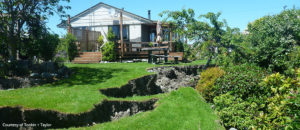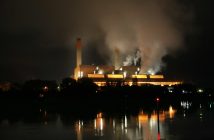Last November’s Kaikoura earthquake will likely change the way scientists think about earthquake hazards in plate boundary zones, according to the first study to come out of the data collected during and immediately after the earthquake
Led by GNS Science researchers, the study reviewed a range of data – including satellite radar imagery – that shows that parts of the South Island moved more than five metres closer to the North Island, in addition to uplift of up to eight metres in some places.
University of Melbourne Associate Professor in Earthquake Science Dr Mark Quigley says this is an “excellent” study that documents the complexity of the Kaikoura earthquake using a suite of different methods and datasets.
“The use of satellite radar data, GPS, seismology, and field geology is now standard practice after major earthquakes.
“In this case, the large international and multidisciplinary author list has worked well to combine these techniques into a rupture model that demonstrates just how complex earthquake ruptures can be.
“The concurrent rupture of at least 12 major faults in this region, including faults with very different prehistoric earthquake chronologies and slip rates, is probably the most novel aspect of the study. The possible involvement of the Hikurangi subduction zone interface is particularly intriguing.
“When we characterise the seismic hazard of an area, we typically consider the magnitude potential of mapped faults independently and consider the potential for large cascading earthquakes like this one based largely on the geometry and distances between mapped faults.
“Recently we have begun to consider the statistical probability of earthquake ruptures to ‘jump’ across from one fault to the next with more sophistication.
“However, it is really challenging to input a rupture scenario like this one directly into a hazard model for an area. The relatively short time period over which we have been able to collect data with the precision that the authors have done in this study, and similarly short time period for which we have been able to instrumentally record earthquakes at all, means we don’t really know how common these types of earthquakes are.
“This study will become a classical example of a complex interplate earthquake and will stimulate earthquake research for decades,” Quigley concludes.




